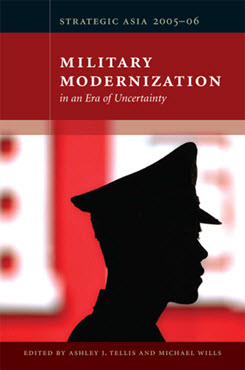U.S. Military Modernization
Implications for U.S. Policy in Asia
This chapter examines whether U.S. military modernization will enable the U.S. to meet threats to its national security interests that are most likely to arise in Asia.
EXECUTIVE SUMMARY
This chapter examines whether U.S. military modernization will enable the U.S. to meet threats to its national security interests that are most likely to arise in Asia.
MAIN ARGUMENT
Despite both geostrategic upheaval (e.g., the rise of China, the nuclearization of North Korea, and the reach of Al Qaeda and affiliates into Asia) and hype over changing U.S. defense policy (e.g., Bush administration revolutions and the RMA), many attributes of U.S. military power are changing only slowly, and most U.S. interests are changing little in Asia. The U.S. remains focused on protecting its security and trade interests and those of its allies, as well as reducing incentives for countries to acquire weapons of mass destruction and engage in conflict with other states.
POLICY IMPLICATIONS
- The U.S. would benefit from continuing to prepare for several relatively unchanging military conflict scenarios. Traditional military infrastructure—weaponry, force structure, basing arrangements, and key allies—should thus not be sacrificed in an overzealous belief in the power of rapid defense transformation.
- The Korean Peninsula, the Taiwan Strait, and South Asia are the three areas in the region most likely to require focused U.S. attention.
- In order to maximize U.S. ability to meet these and any other challenges in the region, the United States would benefit from:
- Maintaining a wide range of military capabilities, including higher-tech “transformative” assets but also large numbers of infantry forces
- Operating a wide range of military bases
- Maintaining a network of allies and other partners that can assist the United States with forward missions, provide bases and protection of bases, and confer political legitimacy to U.S. military operations
Strategic Asia
The Strategic Asia annual edited volume incorporates assessments of economic, political, and military trends and focuses on the strategies that drive policy in the region. Learn more about Strategic Asia.


